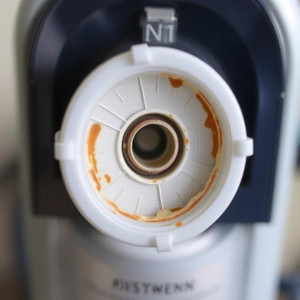-



What Are The Risks of Using A Dirty Oxygen Concentrator Filter?
Views: 0 Author: Site Editor Publish Time: 2025-04-21 Origin: Site

Oxygen therapy is a vital treatment for individuals with respiratory conditions, ensuring they receive the necessary oxygen to breathe and thrive. At the heart of this therapy lies the oxygen concentrator, a device that not only delivers oxygen but also plays a crucial role in the overall health and well-being of its users.
However, like any medical device, oxygen concentrators require regular maintenance to function optimally. One of the most critical aspects of this maintenance is the use of clean oxygen concentrator filters. These filters are designed to trap dust, pollen, and other airborne particles, ensuring that the oxygen delivered is as pure as possible.
In this article, we will explore the importance of using clean oxygen concentrator filters, the risks associated with using dirty filters, and how to ensure you’re using the right filters for your device.
Understanding the risks of using dirty filters
Dirty filters in an oxygen concentrator can pose serious risks to users, primarily through the release of harmful substances into the oxygen stream. When filters become clogged with dust, pollen, and other contaminants, they can no longer effectively trap these particles. As a result, these impurities can be released back into the air, potentially leading to respiratory issues, allergic reactions, and other health problems.
Moreover, dirty filters can also impede the proper functioning of the oxygen concentrator. A clogged filter forces the device to work harder to draw in air, which can lead to increased wear and tear on the machine. This not only shortens the lifespan of the concentrator but can also result in costly repairs or replacements.
In addition to these health and mechanical risks, using dirty filters can also compromise the quality of the oxygen being delivered. Oxygen is a critical component of life for those requiring therapy, and any contamination in the oxygen stream can have severe consequences. For instance, patients with compromised immune systems or severe respiratory conditions may experience exacerbated symptoms or even life-threatening complications if exposed to impure oxygen.
Why clean filters are essential for your oxygen concentrator
Maintaining clean filters in your oxygen concentrator is essential for several reasons, all of which contribute to the overall effectiveness and safety of your oxygen therapy. Firstly, clean filters ensure that the air drawn into the concentrator is free from dust, pollen, and other airborne contaminants. This is particularly important for individuals with allergies or respiratory issues, as exposure to these irritants can trigger symptoms and hinder the effectiveness of the oxygen therapy.
Furthermore, clean filters play a crucial role in the efficiency of the oxygen concentrator. When filters are clogged with impurities, the device must work harder to draw in air. This increased workload can lead to faster wear and tear on the machine, potentially resulting in breakdowns and the need for costly repairs or replacements. Regularly replacing dirty filters with clean ones can extend the lifespan of the concentrator and reduce maintenance costs.
In addition to these practical benefits, clean filters also ensure the delivery of high-quality oxygen. Oxygen therapy is designed to provide patients with the necessary oxygen levels to breathe and function properly. Any contamination in the oxygen stream can compromise the therapy’s effectiveness and pose serious health risks. Clean filters help to guarantee that the oxygen delivered is as pure as possible, providing patients with the best possible care.
Choosing the right filters for your oxygen concentrator
Choosing the right filters for your oxygen concentrator is crucial for maintaining its efficiency and ensuring the delivery of high-quality oxygen. When selecting filters, it’s essential to consider the specific requirements of your concentrator model. Different models may have varying filter specifications, and using the wrong filters can lead to suboptimal performance or even damage to the device.
In addition to model compatibility, the type of filters you choose can significantly impact the performance of your oxygen concentrator. There are generally two types of filters: disposable and washable. Disposable filters are designed for one-time use and must be replaced regularly, while washable filters can be cleaned and reused multiple times before needing replacement. Understanding the differences between these types and their maintenance requirements is essential for ensuring the longevity and efficiency of your concentrator.
Moreover, it’s crucial to purchase filters from reputable manufacturers or authorized dealers. Genuine filters are specifically designed to meet the quality and performance standards of your concentrator model. On the other hand, counterfeit or substandard filters may not provide the same level of filtration, potentially compromising the quality of the oxygen delivered and the overall performance of the device.
Regularly checking and replacing filters is another important aspect of maintaining your oxygen concentrator. Most manufacturers recommend inspecting filters at least once a week and replacing them every 1-3 months, depending on usage frequency and the specific model. Neglecting to change dirty filters can lead to various issues, including decreased airflow, reduced oxygen concentration, and increased strain on the machine.
Final thoughts
Maintaining clean oxygen concentrator filters is paramount for the safety, efficiency, and longevity of the device. Dirty filters can pose serious risks to the user’s health, including respiratory issues and compromised oxygen quality. Moreover, using clean filters ensures optimal performance, extending the lifespan of the concentrator and reducing maintenance costs.
Choosing the right filters for your specific model and regularly replacing them is essential for ensuring the best possible care and effectiveness of oxygen therapy. By prioritizing filter maintenance, users can safeguard their health and ensure the reliable functioning of their oxygen concentrators.
Related Products
content is empty!
Related News
content is empty!
CONTACT US
NO.176, Gaoxin 5th Road, High-tech Industrial Park, Rizhao City276800, Shandong Province, China +86-13396234532 +86-13396234532Copyright © 2023 ZhenFu Group All Rights Reserved. Technology By leadong.com | Sitemap | Privacy Policy














